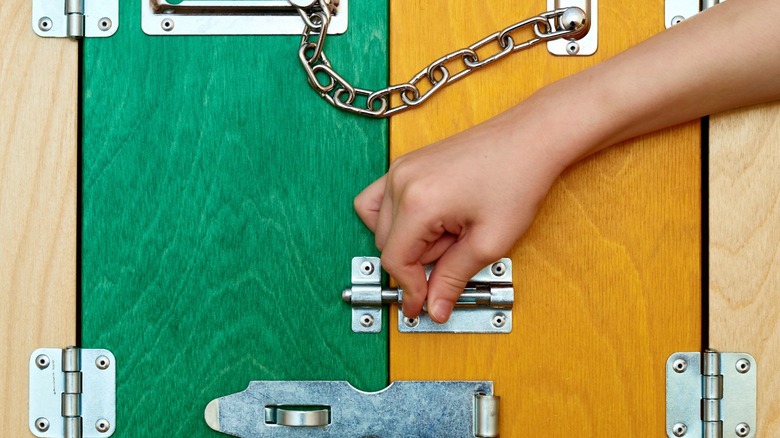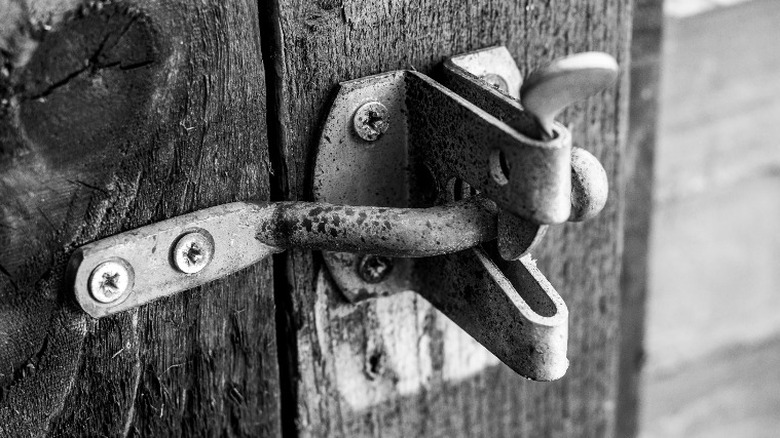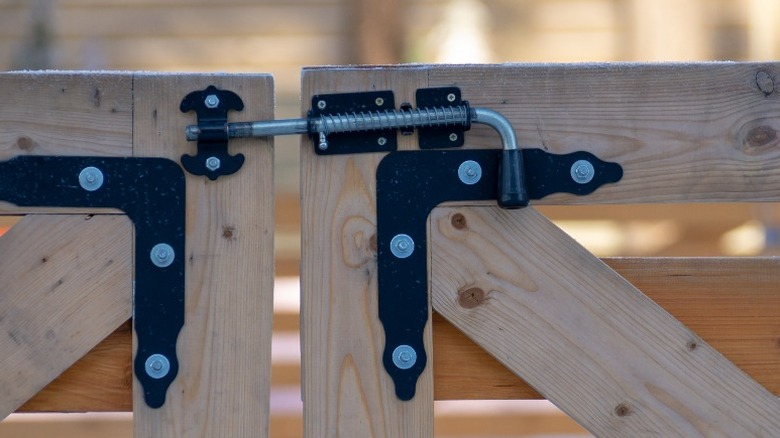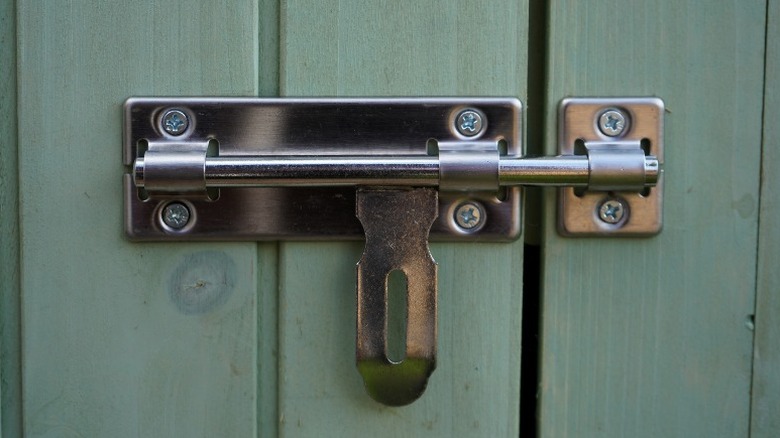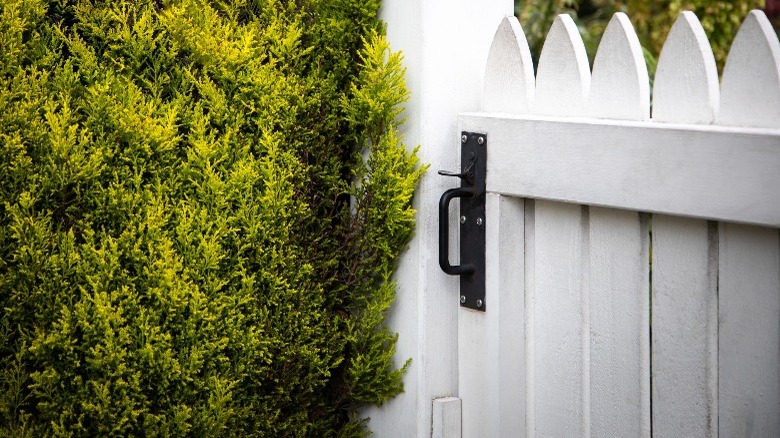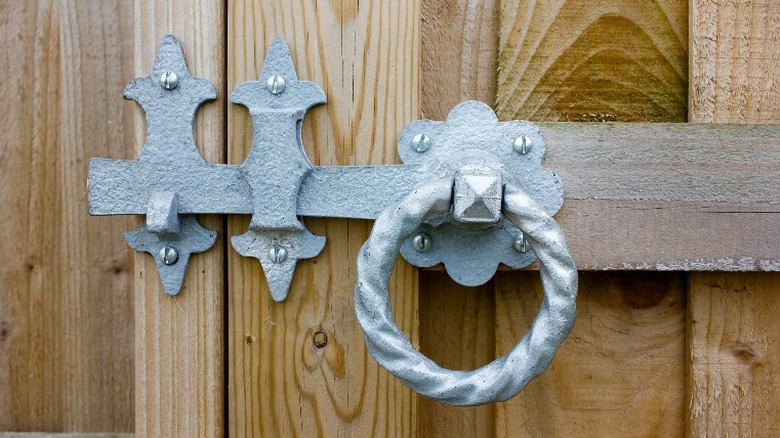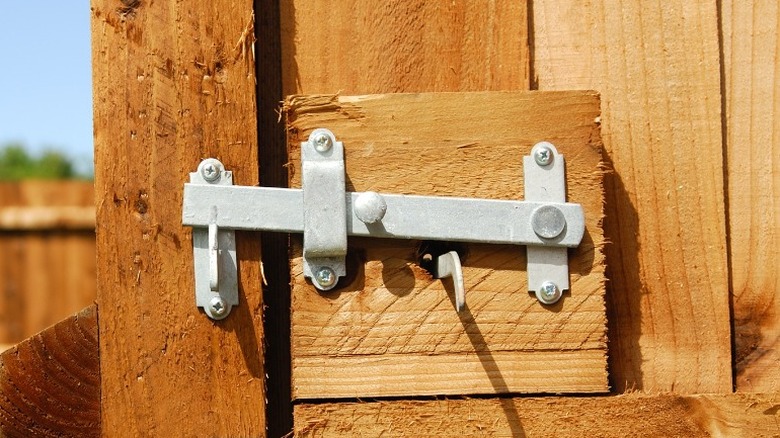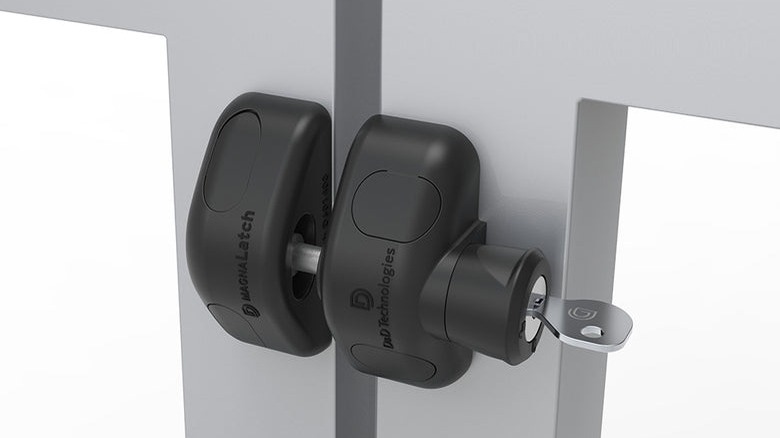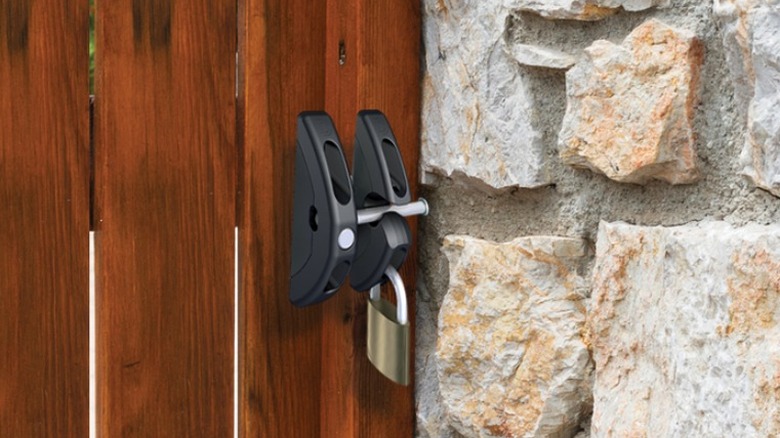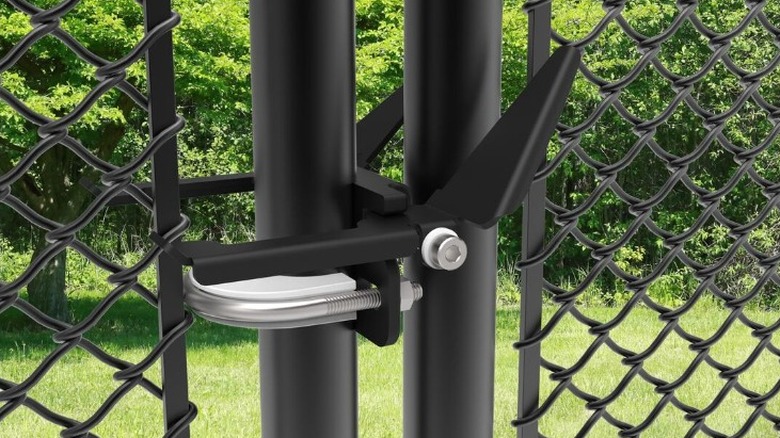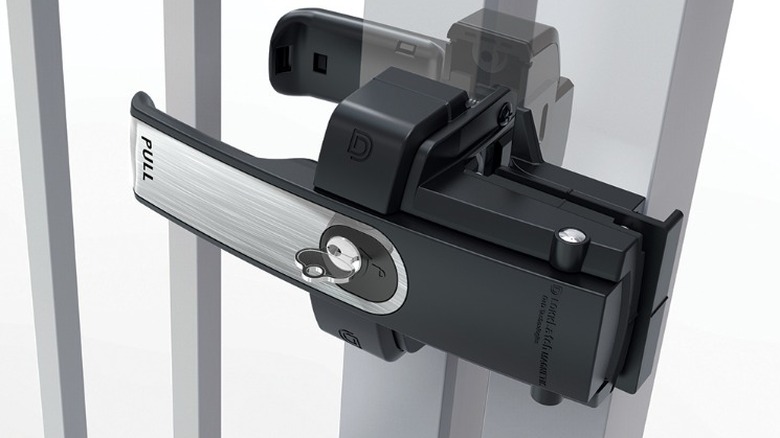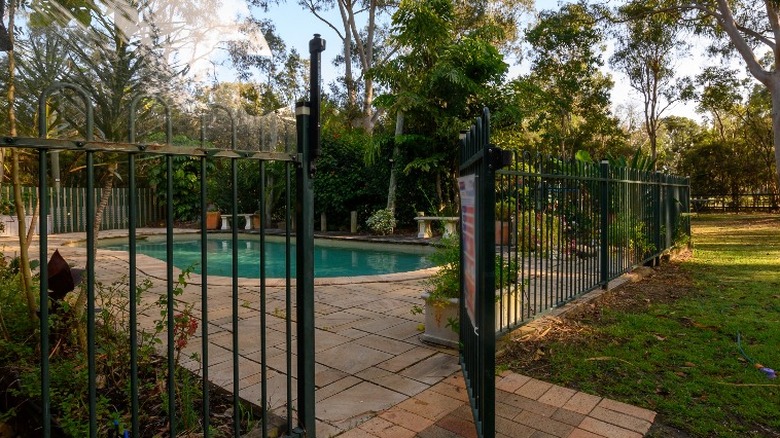What Are The Different Types Of Gate Latches?
When it comes to securing your property and outdoor areas, the most common choice is some form of fence around the perimeter, which is accessed via a gate with a latch. Depending on the design and material of the gate, there are several types of latches to choose from.
Most fences and gates tend to be made from metal or wood, and choosing the correct hardware will not only create the right aesthetic but will also provide the necessary level of security, notes 360 Yardware. Common materials for gate latches are iron, stainless steel, aluminum, bronze, and brass. They can either be modern and contemporary in style or have a traditional, rustic appearance.
Typically, latches are either one-way, which means they can only be opened from the inside, or two-way, in which they can also be opened from the outside. In addition, some latches are lockable with a key or a padlock, while different types of latches are needed for single or double gates, per Upgraded Home.
1. Gravity latch
The most common type of latch is a gravity latch, also known as a fingertip release latch. It has a simple self-closing mechanism that uses the weight of the closing gate to secure the arm within a metal catch.
Bob Vila noted that these types of latches are usually installed on the inside of the gate and are generally one-way. To open the gate, you simply need to lift the latch with your finger. If you want to be able to open the gate from the outside, two-way options are available, and most can be locked using a padlock.
2. Spring-loaded latch
Spring-loaded latches come in various forms, notes Worst Room Home Design. However, all have one common feature: the latching mechanism is held in place with a spring. Some incorporate a bolt that slides into a catch and remains in place with the pressure of the spring, whereas others have an arm that is lifted to open the gate and automatically snaps back into place.
These types of latches are a good choice for in-swinging or double gates and are generally one-way. They don't usually include a locking mechanism; however, some models can be secured with a padlock.
3. Bolt latch
One of the least complex latches is a simple bolt. Home Stratosphere points out that bolts are very easy to install and can be mounted on either side of the gate. This type of latch operates by sliding a metal rod into a catch on the gatepost or frame.
One of the main advantages of a deadbolt is that it is available in a wide range of designs and sizes. This makes it a good choice for large, heavy gates that need a strong latch. If necessary, additional bolts can be added to the bottom of a gate for security.
4. Thumb latch
If you need to open the gate from both the outside and the inside, Gardenista recommends using a thumb latch. These are mounted on both sides of the gate and can often be locked from the inside.
Thumb latches are generally traditional in style and are commonly made from black iron or bronze. From the outside, there is a decorative handle with a small, thumb-activated push button that lifts the latch arm from its cradle. If the latch is lockable, it will usually take a key, similar to a traditional door handle.
5. Ring latch
A ring latch is a common choice for wooden gates due to its traditional, rustic appearance. It is usually made from cast iron and features a large ornate handle on one or both sides in the form of a ring.
Bob Vila explains that ring latches work by twisting the ring, which raises a lever from the catch on the inside. Ring latches are self-closing; however, if security is a concern, this isn't the best option as it rarely incorporates a locking mechanism.
6. Lever latch
Lever latches are very similar in design to a ring latch, except instead of a ring, they have either a handle or a lever that must be lifted. There are many different styles and materials of lever latches to suit modern or traditional fence designs.
Home Awakening noted that lever latches offer several benefits. They are usually straightforward for adults to use but prove to be more difficult for children and pets to open. Additionally, they are highly versatile and can be installed on both in- and out-swinging gates.
7. Side pull latch
Side pull latches are another good option if you have pets or children, suggests Locks 4 Gates. They operate via a spring-loaded knob, which pulls the locking pin out of the catch. They can be mounted horizontally or vertically and can be installed on any kind of gate material.
Additionally, they are often made from durable polymer plastics with a stainless steel locking pin, which makes them corrosion-resistant. Further, many can be locked with a key. One downside, though, is that they can only be installed on the inside of a gate.
8. T-latch
Also referred to as a toggle-style latch, a T-latch has a simple, self-closing mechanism that can easily be secured with a padlock. D&D Technologies notes that a toggle latch is a modern iteration of a gravity latch with the added benefit of helping overcome gate sag or ground movement.
The pivoting latch bolt engages in a heavy-duty polymer housing and has adjustable brackets that can be moved both horizontally and vertically to prevent sticking or binding.
9. Butterfly latch
If you have a fence and gate made from chainlinks, Bob Vila recommends using a butterfly latch. These are usually made from galvanized steel and are attached directly to the framework of a gate or fence.
They have a very simple, self-closing mechanism that allows the gate to open both outward and inward. However, as Hoover Fence notes, these latches aren't usually lockable, and care should be taken to ensure children don't trap their fingers in the moving parts.
10. Magnetic latch
Those looking for a more high-tech solution may want to consider a magnetic latch. AMF Magnetics points out that this type of latch is ideally suited to outdoor use as it is resistant to corrosion and water damage.
Magnetic latches operate and lock from both sides of the gate with no visible fasteners, according to Hoover Fence. They are extremely secure and come in a range of modern finishes to coordinate with your hardware, lighting, or other outdoor features.
11. Swimming pool latch
If you want to secure a gate that accesses a swimming pool, American Home Shield warns that it must be child-proof. Additionally, there are rigorous building codes that stipulate the size of the gate and the type of latch, which are devised to prevent accidental drownings.
A swimming pool latch is usually designed for an outwardly opening gate and has a long shaft so that you can set the opener at a required minimum height. It is also lockable in order to comply with current safety regulations.
